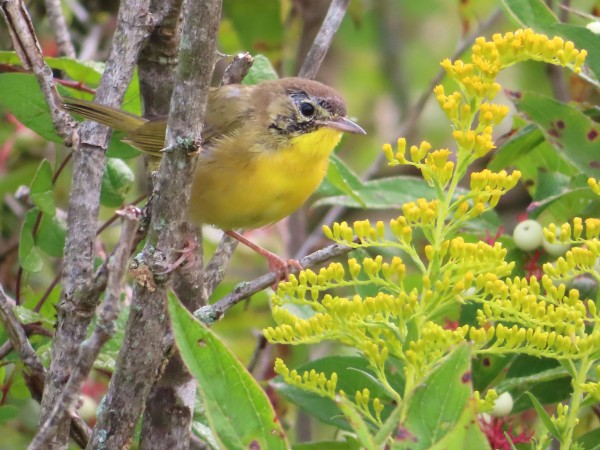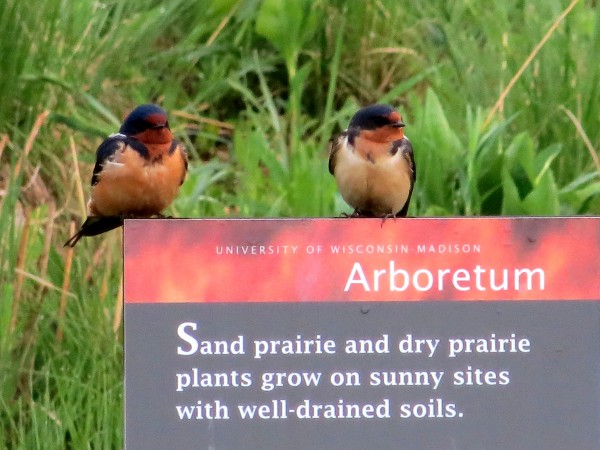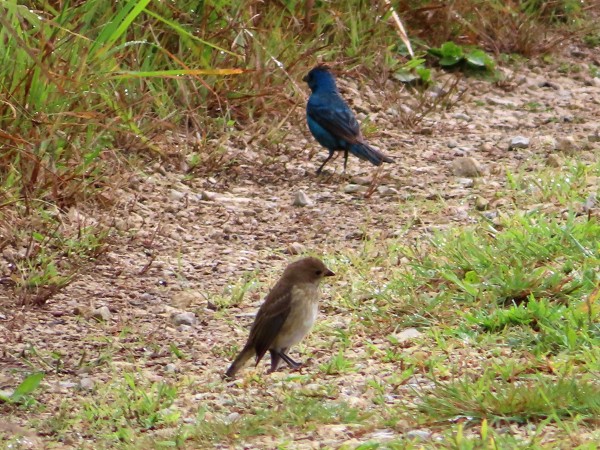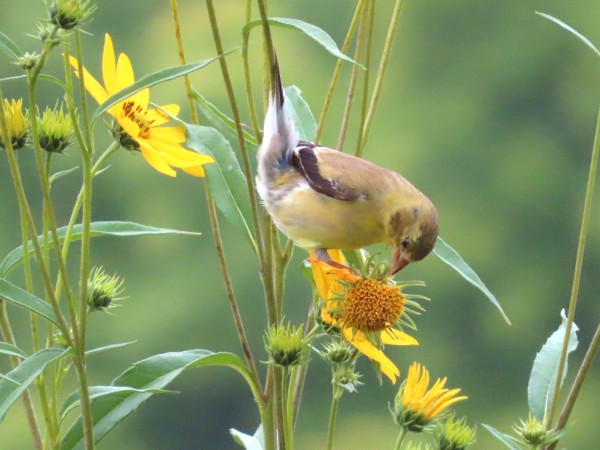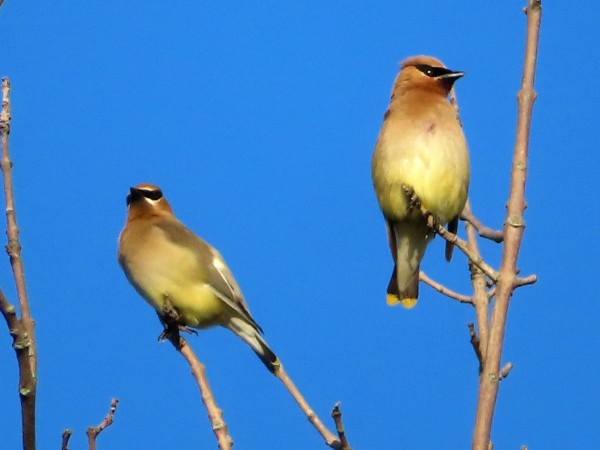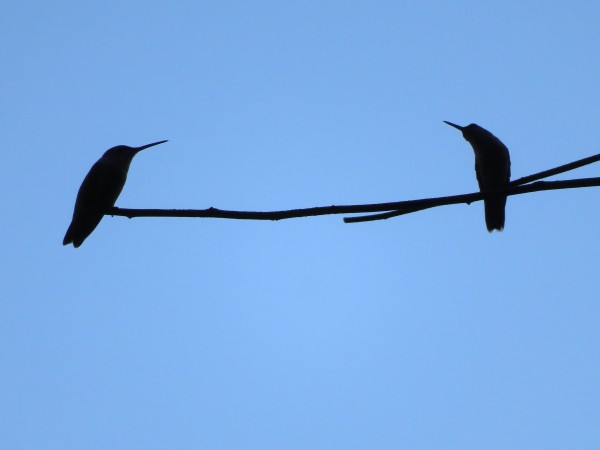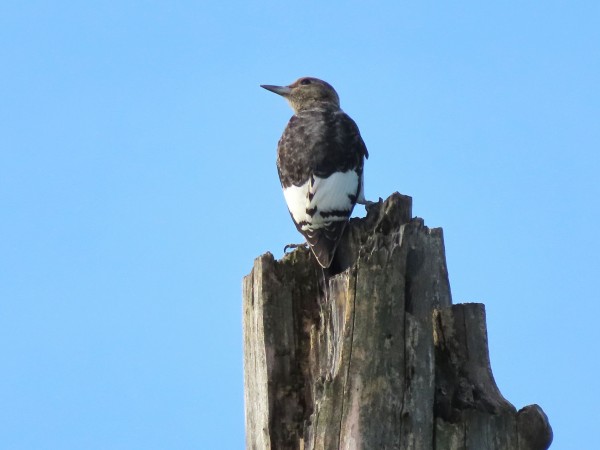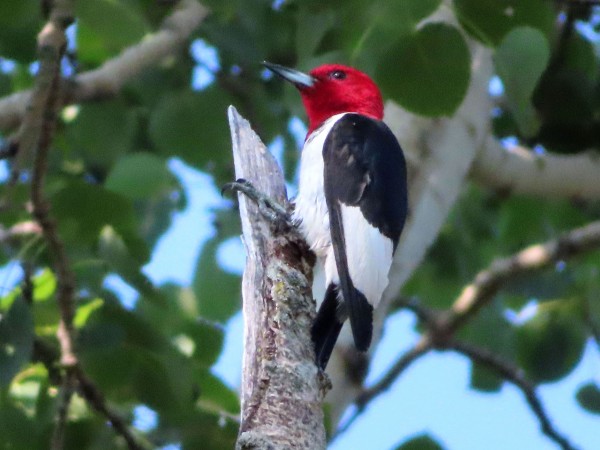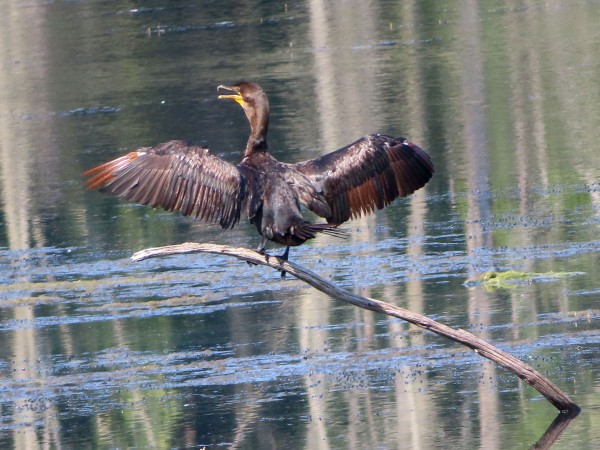Chuck's Birding Report #76
24 August - 30 August 2021
Dear fellow flock of birders,
The wildflowers and grasses in the Arb continue to evolve. Many are going to seed and Mike Hansen told me that his crew is collecting lots of seed for planting in a variety of places around the Arb. Again this past week the Canada Goldenrod and Saw-tooth Sunflower are the dominant showy yellow flowers in Curtis Prairie. Both the Sunflowers and Big Bluestem Grasses love to hang over the paths. If you go out early for a hike along these paths these plants gladly pass their morning dew along to your clothes.
What’s the word about bird activity in the Arboretum this past week?
I’ve not had as much luck seeing warblers in the Arb this past week as I had the week before. I did however have a great day at Lake Farm Park in Dane County last Wednesday seeing 65 different species of birds, 12 of which were different warbler species. I was over the moon that day!
I think I mentioned how difficult it is to identify warblers in the fall because many of the adult warblers change into a plumages that are quite drab. What I forgot to mention was that besides the adult warblers there are many young warblers, newly hatched this spring/summer, that are also difficult to identify. I continue to study the warbler book during the entire fall migration. Included is a photo of a juvenile male Common Yellowthroat. The mask is just developing.
We focus on all the new arrivals from the north but we often forget about what birds are leaving the Arboretum. This past week I think both the Barn Swallows and the Indigo Bunting have left the Arb and headed south. The Barn Swallow numbers last Tuesday were normal at 20-30 or more but on Friday I only saw 2 and the last couple days I haven’t seen any. They aren’t sitting on the Visitor Center solar panels or on the power lines next to the parking lot. They aren’t flying over Curtis Prairie and around the Visitor Center. Those areas are very quiet. Today I did see a few on the roof of the Visitor Center but I think they may be migrants from the north not our locals. A photo of a couple Barn Swallows perched on an Arb information sign is included.
The same could be said about Indigo Buntings. We’ve had more than the usual number this year and we see a number of male most every day. The last time I saw an Indigo Bunting was on August 21st and then I a male and a female down on the trail. I got my first photo of both sexes in the same shot this year. Photo included.
What other species have left? Yellow Warblers leave early. Maybe they have all left too. Others?
The American Goldfinch are late nesters and this past week I’ve seen lots of adults feeding wing fluttering young. I also saw lots of the goldfinches eating seeds from various plants. I usually show photos of the bright males but attached is a female goldfinch eating seeds from a Saw-tooth Sunflower.
Recently I’ve been seeing more and more Cedar Waxwings. They especially like to start their morning sunning themselves in the dead tree just west of the parking lot. They do their preening there too. The included photo shows 2 waxwings. One is an adult and one is a young first year. Can you tell which is which?
Yesterday I saw one Ruby-throated Hummingbird making U-shaped flights as courtship behavior for females. This seems the wrong time of year but that’s what I saw. Next I saw the two hummingbirds chase each other. Finally they stopped and perched next to one another on the same branch. I’ve never seen two side by side. A photo is included.
Today for the first time in a long time I saw a juvenile Red-headed Woodpecker in the Arboretum. We occasionally see Red-headed in the Grady Tract but sightings are rare. The juvenile unlike the adult has a dark gray head. The adult has a red head. Photos of a juvenile and an adult are included.
My last photo is not taken in the Arboretum but in Dane County along the Oregon Rotary Trail which starts at Swan Pond. The photo is of a Double-crested Cormorant. It is a diving bird and need to dry off its wings to keep some buoyancy in the water. It dries its wings by sitting on a perch and spreading its wings for several minutes. A photo of one is included.
One last comment is about a bird passing through the area right now. That bird is the Common Nighthawk. Last night I went across the street to a local park that is primarily an open field of grass. It allowed me to see a broad area of the sky and last night the western sky had multiple layers of flattened clouds that were bright pink at sunset. I was there from 7:30 to 8:00 with my binoculars pointing at the northern horizon or just above the tree tops. I could see nighthawks coming from quite a distance. They didn’t fly over me but were slightly to the west of me and they were against the pink clouds to the west. I saw 21 Common Nighthawks. It was magical. I hope all of you can find an open area so you can see the migrating nighthawks too.
That’s the bird report for the past week.
Good health to all of you and good birding too,
Chuck

